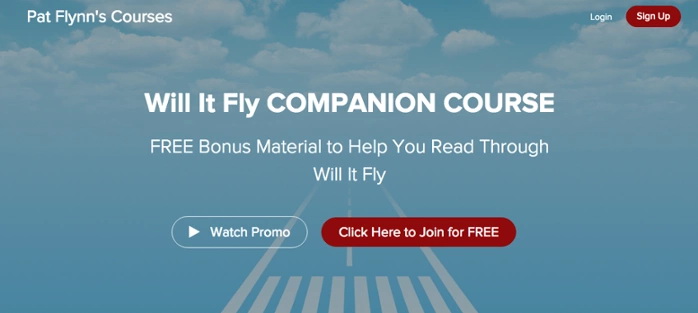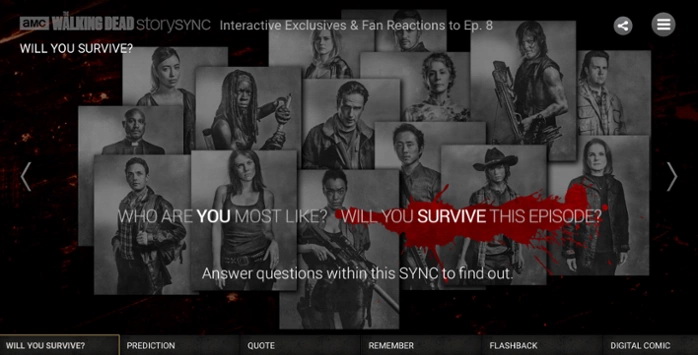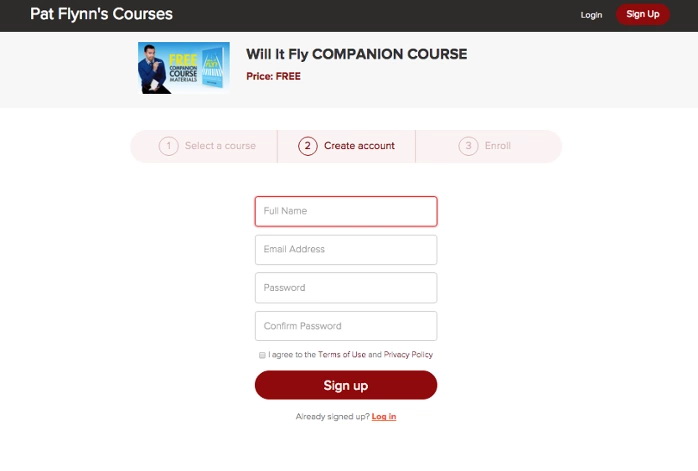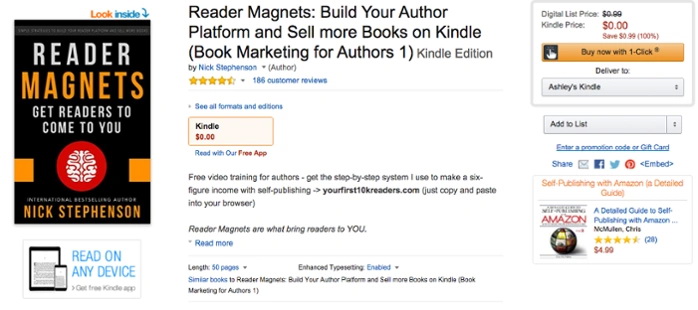Pat Flynn: Why create a course with your book


The world of publishing is changing. It’s no surprise then that we find the earliest adopters, the social innovators, and the smartest entrepreneurs at the forefront. Cue Pat Flynn.
Many of you know Pat from Smart Passive Income—his business that he’s built from the ground up. He currently helps a burgeoning community of 130K+ as the business crash test dummy sharing all of his experiences—both wins and failures—to help his audience reach their goals. But Pat Flynn has a new adventure: He’s launching a book, Will It Fly: How to Test Your Next Business Idea So You Don’t Waste Your Time and Money, and as a complement to the book he’s launching an online course.
In an exclusive interview, Pat sat down to tell us all about his new book, his new course, and why the two make a powerful combination.


Here’s why…
1. An online course enhances the reader experience
If you sit down with Pat’s book, it takes you through the process of validating your business idea. You’ll find target audiences, reach out and connect with influencers, and eventually—maybe—try to sell something.
What’s interesting is that the book itself proves the method. Analyzing his own audience, Pat discovered that the number one thing people asked him was how to decide if the thing they were working on was worth pursuing, thus Will it Fly was born.
But Pat wanted to do more. He wanted to make sure his readers were getting everything they needed to succeed. That’s where Teachable comes in. It’s not uncommon for books to come with things like an ebook version or quick-start guide, but Pat took things to the next level with his course.
Each module in the course compliments a chapter in his book where he talks through ideas via video, links to websites and gives away additional resources—a read-along of sorts.
Think advice on how he started his business, how he recommends finding your profitable idea and other tested methods for validating your idea. The best part—where he got his inspiration.
“One of my favorite shows is The Walking Dead and before every episode of The Walking Dead, the voiceover guy says “go to walkingdead.storysync.com” and there you can get content that you can see and read while you watch the episode and it’s a really cool supplemental experience beyond what you’re watching. You get the behind the scenes, how they filmed things, other parts of the story. I wanted to do the same thing with the reading experience.”


Not only is this idea cool, but it’s practical. Think of the last time you read a business book. There was probably a typed out URL. Since when do we write down and type out full URLs?
An online course solves this problem while also creating an immersive experience. The video aspect of courses and the fact that your face, personality and message greets customers makes courses incredibly engaging. Your audience is getting to know you.
As Pat says, “Who knows if this will be the next big thing in what authors can do, but I’m trying it out to see what happens and so far the launch team…they’re actually pretty impressed.”
2. Collect email addresses from Amazon
Normally when you sell an ebook, you get a one-time payment and that’s it. However, Pat is making his book+course combo do work.
When people buy his book on Amazon, they have to register for his online course to gain access, but in registering, they’re entering their email address here:


Offering a course like this effectively funnels reader onto his email list, which he can use to support future business efforts.
3. Promote a course through your book
There’s more than one marketing advantage to having an online course with a book. Since you can now use your course to collect email addresses you can promote your course through your online book using one as a lead magnet for the other.
As we’ve seen before with people like Nick Stephenson (which we detail in this post: How to Explode Your Email List). You can promote your course through a book very easily on Amazon.
Simply link to your course in the first few pages of the book like this:




We have an “online course creators to-do list” that will get you started on the right foot—for free.
That blue link is active and anyone can click it whether or not they buy or download your book.
When people preview your book in Amazon, they will see the link to your course. This also means that some people who may not buy your $20 book will be redirected into your free course.
Genius, right?
With your course linked on the first pages of your book, you’re also promoting your course any time you promote your book.
Generally, people coming to your email list this way convert around 10%!
4. Promote a book through an online course
The flip side of the coin is to use a course to promote a book. Since Pat’s course is free, anyone who signs up for his course and likes it, is likely to want the book.
As mentioned before, some people who don’t buy the book will join the course. If they like this piece of content, they’re more likely to buy.
“Anybody can get access to the course—the more the better because you’re getting email addresses and will probably be able to sell books,” Pat said.
There are specific marketing techniques that work better with digital products and others that work better with physical products. Having a book+course combo allows you to tap both.
5. Sell future courses
Pat’s the kind of guy that thinks ahead. He pointed out that by selling the course+book combo and funneling people into his Teachable school—Pat Flynn’s courses he’s laying the foundation to create more courses.
Anyone who buys the book and signs up for this course will have the login information for his school—so will anyone who only enrolls in his course. This audience will also have learned what to expect in his valuable course, how beneficial they can be, and how to interact in the technology making a second course a natural progression.
Also, Teachable has a Free plan. Check it out and play around with your own course here.
6. Courses tend to make more money than books
We might seem biased, but the facts show that it’s easier to start generating big number incomes with an online course than with just a book or ebook. There are a number of reasons for this, but it boils down to the fact that courses are gated content and perceived as valuable.
Your course will never be given away for free unless you set your price to free. Our global culture values education. You’d be hard pressed to find someone willing to pay $100 for a book, but $100 for an online course is normal, if not low.
While Pat used a course to complement his book and Nick used a book to promote his course, you can also use content from a book to quickly create a course.
Each chapter of your book can become a module in your course. You can turn chapters into scripts or even just copy and paste them. If you already have this kind of content created, an online course has an extremely high return-on-investment for you.
Just ask Ryan Holiday.
“Publishing as an industry has always been slow to embrace innovation. But I saw [Teachable] as a chance to essentially create an additional medium for readers to consume the content I’d created for my book. Some people like audiobooks, some people like ebooks, some people like physical and as I found, a lot of people like module-based courses. In fact, some people like purchasing in more than one format. For an author, this was a major revenue stream—one with better margins than most of the other mediums actually,” Ryan said.
We also recently interviewed Joanna Wiebe of Copy Hackers who created online courses to expand on what she cover in her ebooks. In her own words, she made close to 10 times her ebook profits on her book in a much shorter time period. You can watch the interview here.
While Pat is giving away his course for free, it’s still perceived as high value. His readers know how much Pat cares about them and how far he’s willing to go to give them actionable advice. Giving away a valuable piece of content like a course (that you could charge for) says a lot about who you are to your audience.
7. Meet your audience
We touched on this a bit earlier, but a course connects you and your audience on a much deeper level than a book can.
The fact that your readers see your face and hear your voice is huge, but they can also leave comments within your course and ask questions with you and others.
